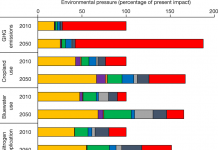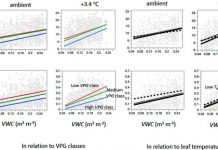【长期寻找的甲烷生成机制得到确定】Thanyaporn Wongnate1 Dariusz Sliwa1* Bojana Ginovska2 Dayle Smith2† Matthew W. Wolf3 Nicolai Lehnert3 Simone Raugei2 Stephen W. Ragsdale1‡. The radical mechanism of biological methane synthesis by methyl-coenzyme M reductase. Science 2016 352(6288): 953-958
研究人员发现了细菌制造甲烷的机制,甲烷是一种强力的温室气体。微生物产生的甲烷目前是地球上最重要的甲烷来源,这些微生物每年向大气中泵入了数亿公吨的 甲烷。科学家们长期以来一直在寻求查明甲烷合成酶——甲基-辅酶M还原酶(MCR)——的作用机制,它对研发能生产并利用将甲烷用做能源的技术具有重要意 义。人们提出了促进该合成反应的两种机制:镍原子或自由基。要决定哪种机制正确颇为困难,因为该反应速度非常快,反应中间物质的加工过于快速而无法对其进 行分析。同时,在反应中的镍原子态对氧高度敏感。Thanyaporn Wongnate和同事在此用化学方法减缓了该反应的速度,并用冷冻技术确定,一种自由基是甲烷生成中的关键机制。在一则相关的《视角》中,Thomas Lawton和Amy Rosenzweig说:“中间产物的确认结束了20多年的争议,并为达成一种MCR机制的共识做好了准备。”(来源:EurekAlert!)
Abstract
Methyl-coenzyme M reductase the rate-limiting enzyme in methanogenesis and anaerobic methane oxidation is responsible for the biological production of more than 1 billion tons of methane per year. The mechanism of methane synthesis is thought to involve either methyl-nickel(III) or methyl radical-Ni(II)-thiolate intermediates. We employed transient kinetic spectroscopic and computational approaches to study the reaction between the active Ni(I) enzyme and substrates. Consistent with the methyl radical–based mechanism there was no evidence for a methyl-Ni(III) species; furthermore magnetic circular dichroism spectroscopy identified the Ni(II)-thiolate intermediate. Temperature-dependent transient kinetics also closely matched density functional theory predictions of the methyl radical mechanism. Identifying the key intermediate in methanogenesis provides fundamental insights to develop better catalysts for producing and activating an important fuel and potent greenhouse gas.
【亚马逊地区异戊二烯大气化学】Yingjun Liu







